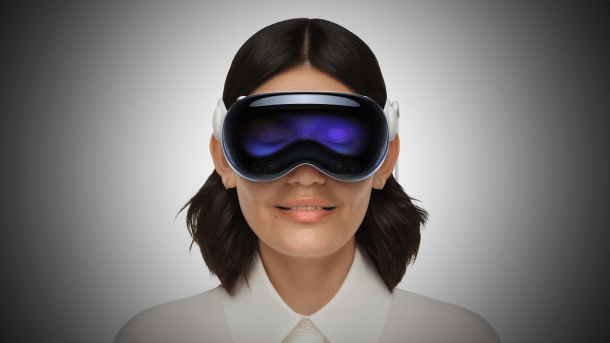Vision Pro: Brain interface soon – and tandem OLED displays?
A start-up has adapted its brain-computer interface to Apple's headset. There is also speculation about a new OLED for the Vision Pro.

(Image: Apple)
Apple's Vision Pro is to be controlled by a brain interface for the first time. There are also rumors that Apple is planning a new screen with special features for the mixed reality headset. Both pieces of information came to us this week from the USA and South Korea.
Headset without hands
Synchron, a New York City-based company specializing in neurotechnology, reports that its proprietary brain-computer interface (BCI) now also works with Apple glasses. This was tested on a 64-year-old patient with amyotrophic lateral sclerosis (ALS) who was able to move a cursor as well as watch TV programs and send text messages. He was also able to play solitaire in this way, writes Synchron in a press release.
Apple has already integrated various accessibility functions of its own accord. The Synchron BCI builds on these and can also be used to control an iPhone, Mac or iPad. The BCI can also be controlled by people who cannot operate the various devices with their hands or via voice commands. According to Synchron, it is implanted in the blood vessel on the surface of the motor cortex and is inserted via the jugular vein. This is minimally invasive. The system will then receive instructions from the patient's brain.
OLED from the iPad for Vision Pro
Another Vision Pro innovation comes from Asia. The Sisa Journal reports on attempts by Apple to shrink the familiar tandem OLED display from the iPad Pro M4 to a suitable size for the headset. The idea is apparently that this will be done in collaboration with one of Apple's suppliers from South Korea, such as LG Display or Samsung Display.
These could create micro-tandem OLEDs with more luminosity and lower power consumption by 2026 and possibly be cheaper than the current 4K screens that Apple purchases from Sony. Micro-tandem OLEDs should also have a longer lifespan than regular micro OLEDs, Samsung Display and Co. hope. The technology is also being tested in China by Apple's supplier BOE, which is not always reliable.
Empfohlener redaktioneller Inhalt
Mit Ihrer Zustimmung wird hier ein externer Preisvergleich (heise Preisvergleich) geladen.
Ich bin damit einverstanden, dass mir externe Inhalte angezeigt werden. Damit können personenbezogene Daten an Drittplattformen (heise Preisvergleich) übermittelt werden. Mehr dazu in unserer Datenschutzerklärung.
(bsc)